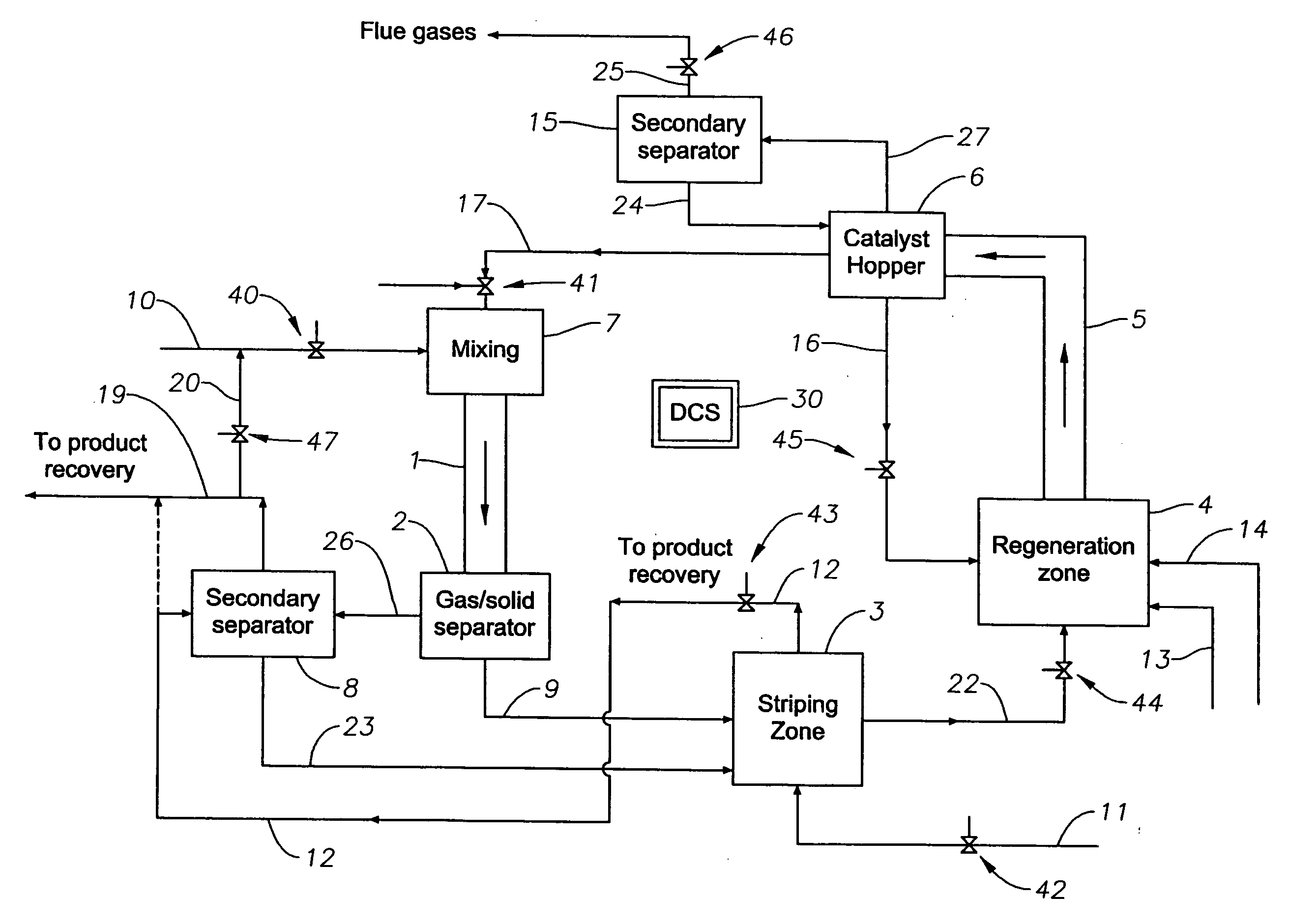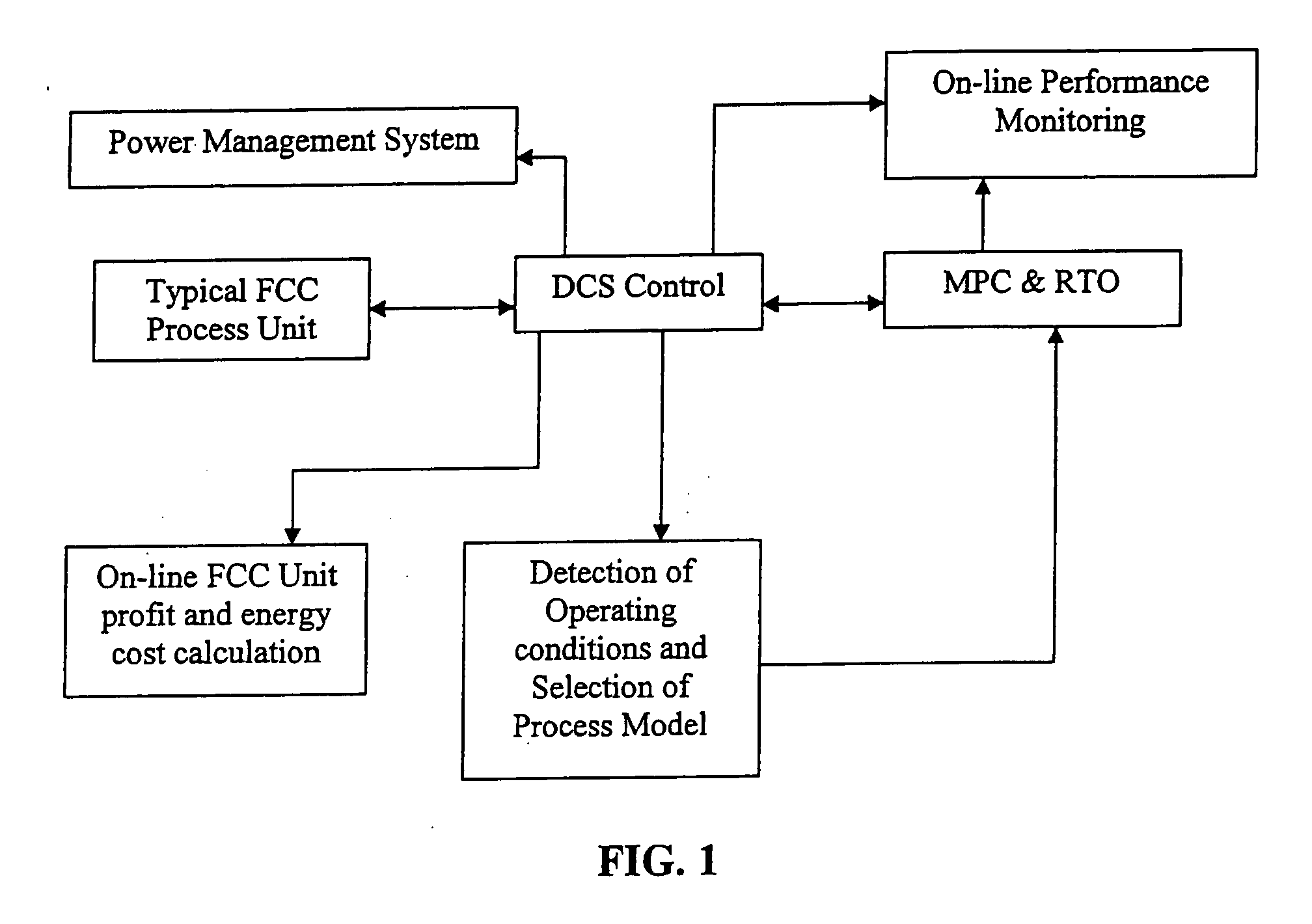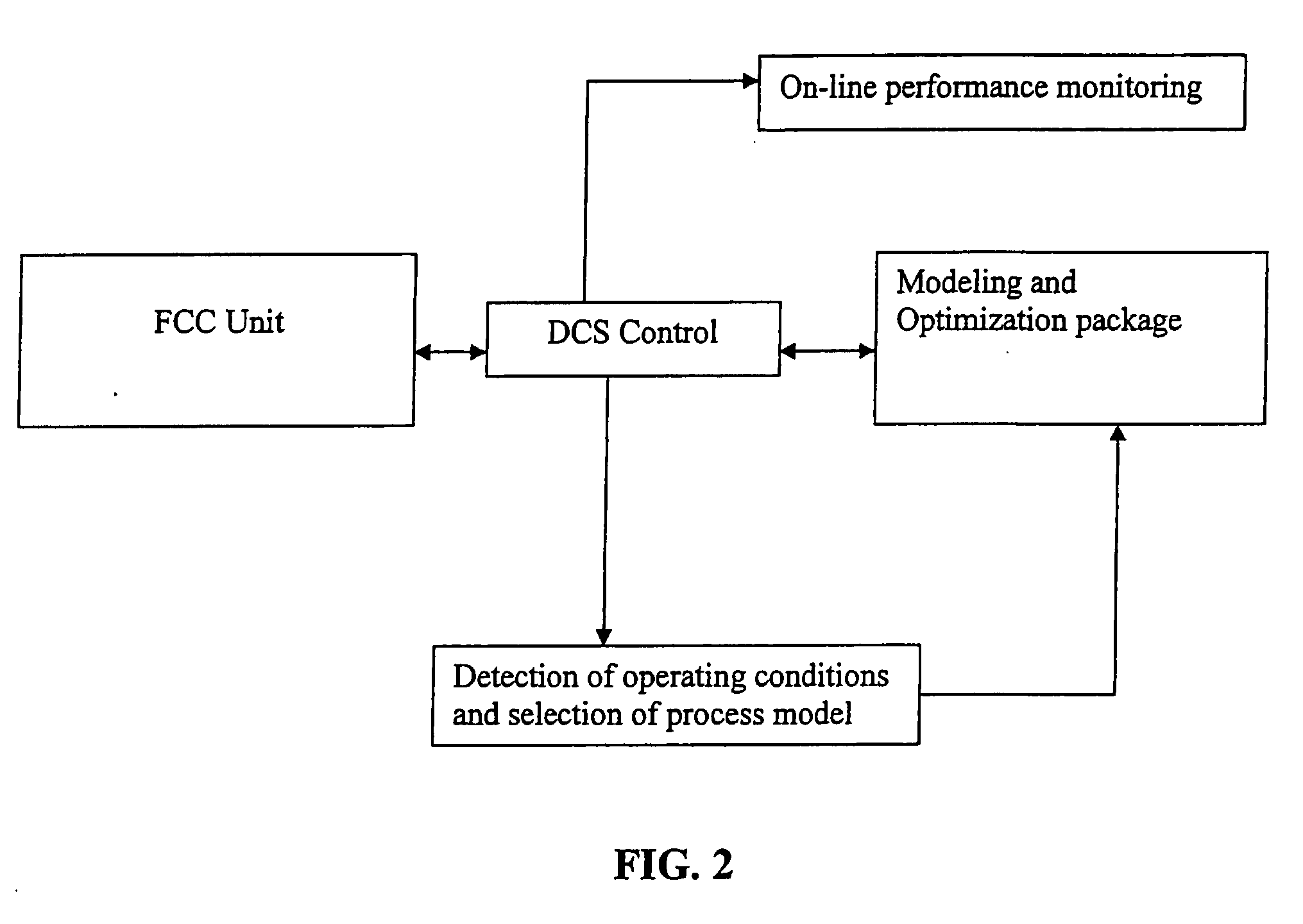Advanced control of severe fluid catalytic cracking process for maximizing propylene production from petroleum feedstock
- Summary
- Abstract
- Description
- Claims
- Application Information
AI Technical Summary
Benefits of technology
Problems solved by technology
Method used
Image
Examples
case b
results:
Conversion (in wt %):86.3% (Comparative example 2)Yield of (in wt %):Dry gas3.8Propylene11.3Butenes15.0Gasoline48.7LCO+13.7Coke2.7
[0106]Case C was conducted in accordance with the disclosure and teachings contained herein and include application of advance Process Control and Monitoring tools.
Case C results include:
Conversion (in wt %)97.6% (Example with APC)Yield of (in wt %):Dry gas4.2Propylene18.7Butenes22.95Gasoline41.65LCO+4.3Coke0.98
[0107]The benefits of using automation and monitoring tools, as set out in Case C include, but are not limited to, the following. As can be seen in Case A and Case B, the conversion rate varied from 86.3% to 95.6%, and the propylene yield ranged from 11.3 to 18.7, representing approximately an 11% variation in conversion rate and approximately a 65% variation in propylene yield by changing operating conditions, mainly catalyst to oil ratio and reactor temperature. This shows a high potential for improvements using on-line monitoring and adv...
PUM
| Property | Measurement | Unit |
|---|---|---|
| Temperature | aaaaa | aaaaa |
| Temperature | aaaaa | aaaaa |
| Time | aaaaa | aaaaa |
Abstract
Description
Claims
Application Information
 Login to View More
Login to View More - R&D
- Intellectual Property
- Life Sciences
- Materials
- Tech Scout
- Unparalleled Data Quality
- Higher Quality Content
- 60% Fewer Hallucinations
Browse by: Latest US Patents, China's latest patents, Technical Efficacy Thesaurus, Application Domain, Technology Topic, Popular Technical Reports.
© 2025 PatSnap. All rights reserved.Legal|Privacy policy|Modern Slavery Act Transparency Statement|Sitemap|About US| Contact US: help@patsnap.com



